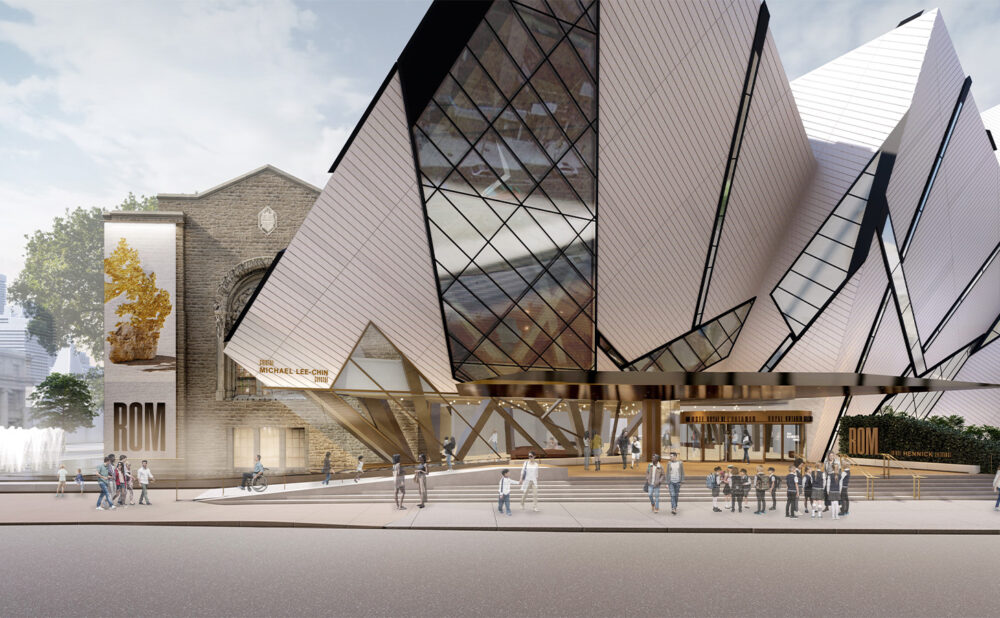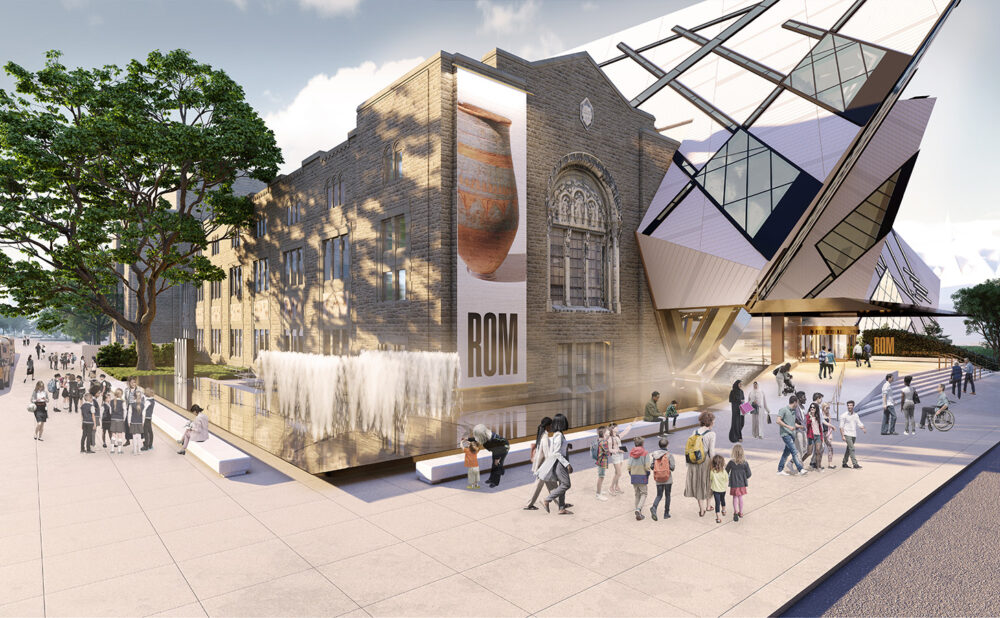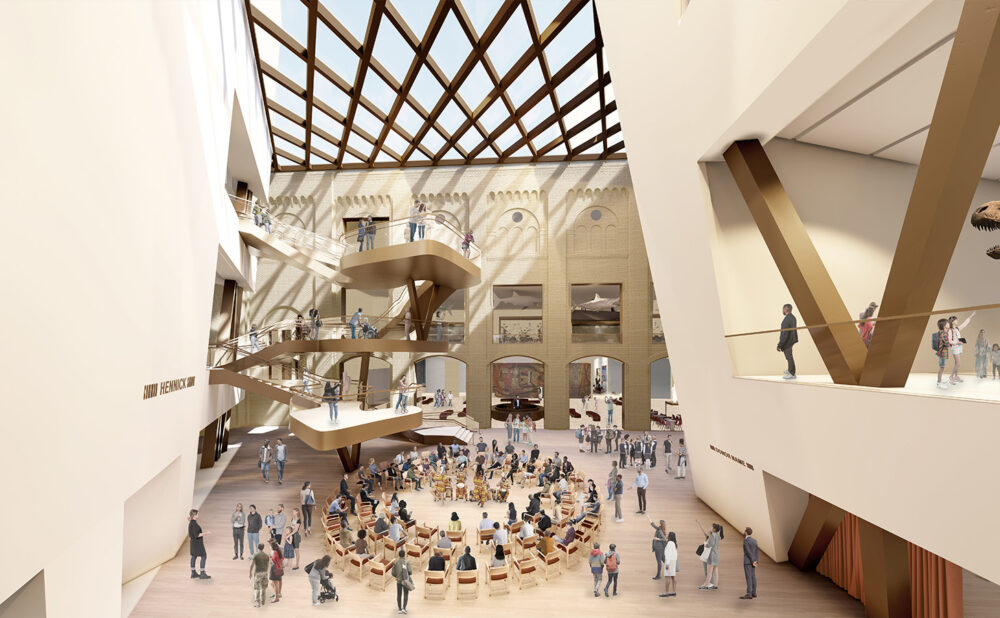ROM gets visionary rethink of Crystal corner
New “opened up” entrance, free admission all in museum’s future
The Royal Ontario Museum (ROM) is about to right a historic wrong — in this case, recent history, which saw the museum add the super-cool-looking Daniel Libeskind-designed Crystal in 2007. It’s a classic case of design trumping function: it looks awesome but also poses a major health hazard in winter with potentially visitor-impaling icicles hurtling off the structure’s ledges.
Ropes and stanchions marking unsafe areas, plywood hoarding and signs warning of danger all clustered at the entrance in winter months creating a sense that, like LRTs in this city, the project was never finished. The sprawling ramp and empty spaces upon entering added to the sense of visiting an incomplete and unwelcoming place. It was easy to think you’d entered through the wrong door.
All of this and more will be addressed by massive changes to the museum’s Bloor Street entrance, announced today at a gleeful press event, all designed to open the museum to the city and to highlight the Crystal’s design while fixing its functional flaws.
ROM director and CEO Josh Basseches and lead architect Siamak Hariri joyfully presented an expansive vision that opens up the museum both on the outside and the inside. The hopeful result will be welcoming spaces on Bloor with a clear and inviting entrance to the museum and ROM-collection items on view upon entry, not hidden behind ticket-takers. Once inside, the ceiling will be raised with massive skylights illuminating a “courtyard area” that includes cutaway views into the galleries on the floors above. The heritage features of the original museum exterior are highlighted, not buried, in the new design, and 6,000 square feet of additional gallery space will be created on the second and third floors of the expanded structure.
Critically, a canopy feature will be added to the outside entrance protecting all from the dreaded falling icicles. A personal favourite new feature is the “year-round” water fountain, at the corner of Bloor and Avenue Road, designed to spray gloriously in warm weather and freeze into an ice sculpture in the cold months.
The ”opening up” of the museum will be further achieved by implementing permanent free admission to the ROM’s first floor once the reno is completed in, allegedly, in 2027.
The bulk of the funding comes from a $50-milion donation, the museum’s largest ever, from the Jay and Barbara Hennick Family Foundation. The private funding didn’t stop museum-killing Neil Lumsden, minister of Tourism, Culture and Sport, from strutting in front of the proceedings and regaling the room with the confidence of a man used to being heard. It took all my strength not to shout “Stop killing the Science Centre!” as Lumsden feigned an interest in supporting science in the province while he simultaneously intends to destroy a heritage site and slash support for the Ontario Science Centre.
But I decided to save it for my article highlighting a visionary plan for an Ontario museum announced at the same time as the province continues plans for destroying another one.
Question: What do the Ontario Science Centre and the ROM have in common? They’ll both soon have subway stations named after them. Sadly, on a triumphant day for the ROM, the similarities between the two institutions seem to end there.








